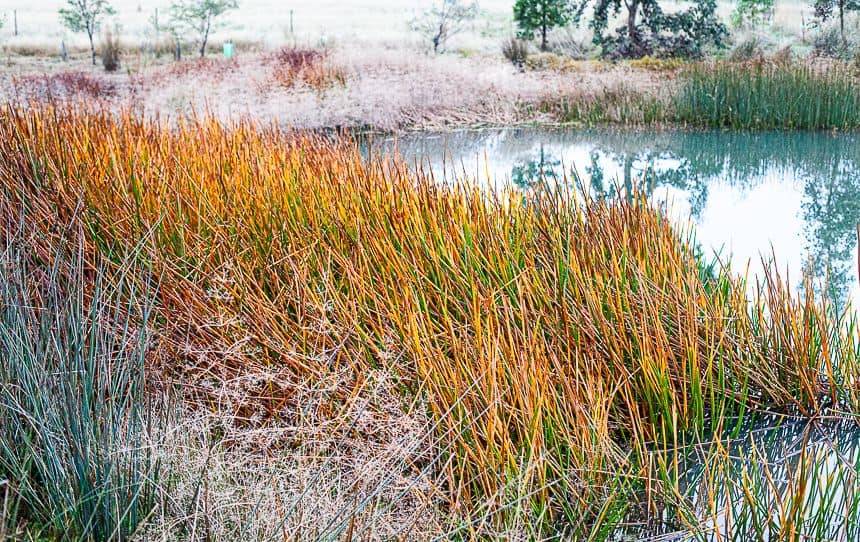How to build a wetland, and why
Posted on 11 February, 2021 by Ivan
We came across this thoughtful and well-developed article on how to build a wetland on your property and why this might be beneficial for your landscape, biodiversity and primary production. The article is written by Hepburn Shire resident, and ecological author, Mara Ripani, for Pip Magazine. We particularly liked the way she entwined her ecological observations, with solid science and creative writing.
‘Think of it as the most amazing natural swimming pool, where all the indigenous plants you have introduced filter and absorb nutrients. In summer the wind passes through the water’s surface cooling down local microclimates through evapotranspiration’.

Wetlands should have a broad mixture of plants to be established both on the edges and inside the wetland itself, via a relatively shallow gradient transition. Photo: Mara Ripani
Wetlands are powerhouses of biodiversity, supporting endless lifeforms. We show you how (and why you should) build a wetland.
It is possible to create extraordinarily beautiful and meaningful habitat by building a wetland.
Unlike a typical dam, a wetland will have been designed to allow for a broad range of aquatic plants, creating homes for frogs, insects, visiting birds, dragonflies, bats, antechinus, planigale, brolgas, native geese and bandicoots, to name a few.
Wetlands, swamps, damplands and sumplands all vary in terms of the amount of water they hold at different times of the year. With some holding water most of the time and others only showing water above soil during very wet seasonal rains.
They are all extremely important, as they provide homes and drinking water for our exceedingly beautiful wildlife and help to cool local microclimates. They are dynamic vibrantly rich habitats, which allow us to reconnect with the wild and welcome in an exciting chorus of animals.
Wetlands and clay soil
The first step to designing and beginning to build a wetland is to identify your soil type, as only clay will do. And not just any clay. Some clay soils are dispersive meaning that they do not stick together when wet.
A clay soil that when moist “can be rolled to the thickness of a pencil without breaking apart, will hold water once it has been compacted” (Romanowski 1998).
Another approach for determining the clay content of your soil is to place a sample of soil taken from the desired wetland site and place it in a glass jar. Shake the jar vigorously with lid tightly on and then let the soil settle for up to 24 hours, by which time sand should settle to the very bottom. Followed by silt and clay. Click here for help.
To test if soil is dispersive (structurally unstable) click here.
To read the full article, please click on the link below via the Pip Magazine.
pipmagazine.com.au/build/build-a-wetland/






Leave a Reply